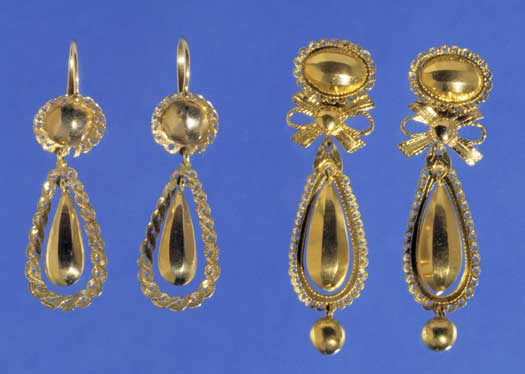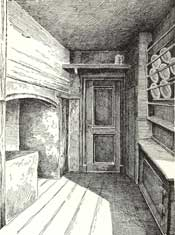The theft of the Golden Horns
In the 18th century both of the Golden Horns were placed in the Royal Art Museum, which lay in the building where the Public Record Office is located today. However, on the night between the 4th and 5th of May 1802 a break-in occurred. The thief stole both horns and then melted them down. The culprit was Niels Heidenreich, who had previously been convicted of forging coins. He was freed though in 1797 and established himself as a goldsmith, but his business did not go well. He tried to rectify this by gaining access to the Golden Horns with a copied key and then took them back to his home on the corner of Larsbjørnsstræde and Studiestræde. The Golden Horns were broken up and then melted down. The gold was used to make copies of Indian coins and buckles. The buyers of the time were subsequently forced to hand the gold in to the state, which then melted the prehistoric gold down into coins. However, the state failed to trace two pairs of earrings made out of the Golden Horns. Today these can be seen at the Museum in Ringe and the National Museum. One of the pairs of earrings is exhibited in the exhibition about Danish Prehistory, together with copies of the Golden Horns.



